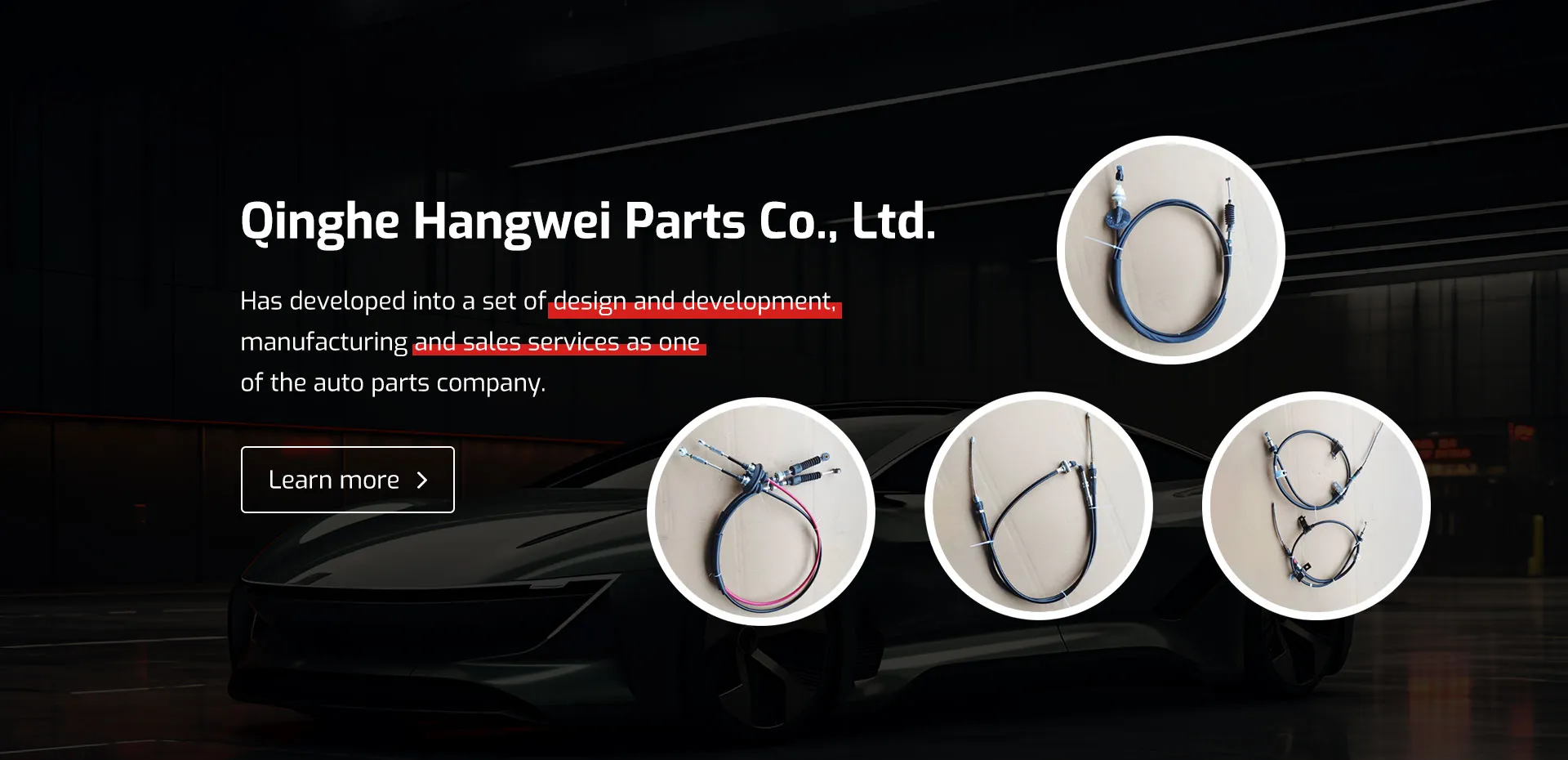Understanding the Importance of Throttle Cables in Automotive Performance
Understanding Car Throttle Cables Function, Maintenance, and Importance
In the intricate world of automotive mechanics, the throttle cable plays a crucial yet often overlooked role in the operation of an internal combustion engine. Whether in an everyday car or a high-performance vehicle, the throttle cable serves as a critical link between the driver's intent and the engine's response. This article delves into the significance of the throttle cable, its functioning, maintenance tips, and its importance in vehicle performance.
What is a Throttle Cable?
The throttle cable is a flexible wire that connects the accelerator pedal to the throttle body in the engine. When the driver presses the accelerator pedal, the cable pulls on the throttle plate, allowing more air (and consequently more fuel) to enter the engine. This increase in air and fuel mixture enhances engine power and accelerates the vehicle. Modern cars may use electronic throttle control systems that replace the traditional cable with sensors and motors, but many older models still rely on the mechanical throttle cable.
Functionality of the Throttle Cable
The functioning of the throttle cable is relatively straightforward, yet it is vital for smooth vehicle operation. When the accelerator pedal is depressed, it causes the cable to stretch. This motion translates directly to the throttle body, which opens or closes in response, regulating the airflow into the engine. The amount of air that enters the engine directly correlates with the vehicle's speed and acceleration. A well-functioning throttle cable ensures that there is an immediate response to the driver’s input, thus enabling quicker acceleration and better control of the vehicle.
Signs of Throttle Cable Issues
Over time, the throttle cable may experience wear and tear due to friction and exposure to extreme temperatures. It is crucial to be aware of signs indicating potential issues with the throttle cable
1. Delayed Acceleration If there is a noticeable lag between pressing the accelerator and the car’s response, it could signify a problem with the throttle cable. 2. Sticking Throttle A sticking throttle can cause the engine to rev unexpectedly. This presents safety concerns, as it may lead to loss of control of the vehicle.
3. Inconsistent Engine Performance If the engine runs rough or fails to respond consistently to the accelerator pedal, the throttle cable might be faulty.
car throttle cable

4. Visual Damage Inspecting the throttle cable for fraying, kinks, or debris can reveal issues that may not yet have manifested in performance problems.
Maintenance of the Throttle Cable
Regular maintenance of your throttle cable can prevent many issues from developing. Here are some tips
1. Routine Inspections Regularly check the integrity of the throttle cable, ensuring it is free from debris and damage. Replacing a worn or frayed cable before complete failure is crucial for safe driving.
2. Lubrication Some throttle cables can benefit from periodic lubrication to reduce friction and wear. Check the vehicle manufacturer’s recommendations regarding lubrication practices.
3. Proper Installation If replacing the throttle cable, ensure that it is installed correctly to avoid excess tension or slack, which could affect performance.
4. Monitor Driving Behavior Aggressive driving and sudden acceleration can put extra strain on the throttle cable. Being mindful of your driving habits can prolong the life of this component.
Importance of a Reliability Throttle Cable
The reliability of the throttle cable is directly tied to vehicle safety and performance. A functioning throttle cable ensures that the driver maintains control over acceleration, allowing for smooth driving experiences. Moreover, in performance vehicles, a high-quality throttle cable can enhance responsiveness, contributing significantly to overall driving dynamics.
In conclusion, while the throttle cable may seem like a minor component in the grand scheme of the automotive engine, its importance cannot be understated. Proper functioning and maintenance of this cable ensure that vehicles respond aptly to driver inputs, leading to safer and more enjoyable driving experiences. For drivers and automotive enthusiasts alike, keeping a close eye on the throttle cable can prevent minor issues from escalating into significant safety concerns. Remember, a little prevention goes a long way in automotive care.
-
Upgrade Your Vehicle with High-Quality Handbrake CablesNewsNov.01,2024
-
Optimize Your Bike's Performance with Quality CablesNewsNov.01,2024
-
Enhance Your Vehicle's Performance with Quality Clutch ComponentsNewsNov.01,2024
-
Elevate Your Vehicle's Performance with Quality Throttle CablesNewsNov.01,2024
-
Elevate Your Vehicle's Performance with Quality CablesNewsNov.01,2024
-
Affordable Solutions for Your Cable NeedsNewsNov.01,2024
